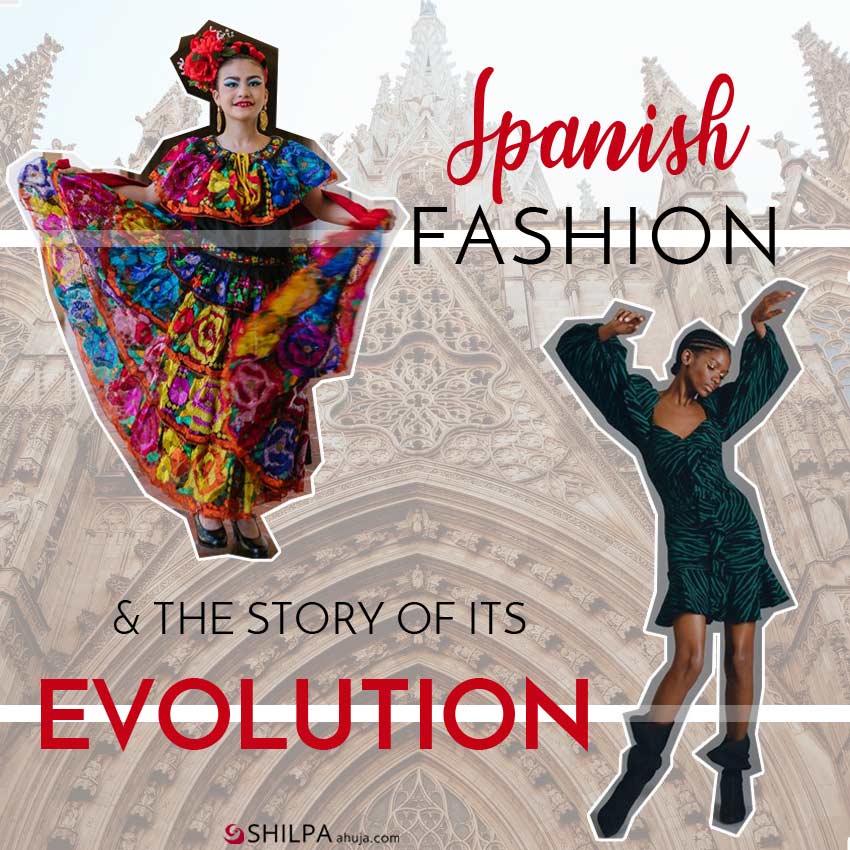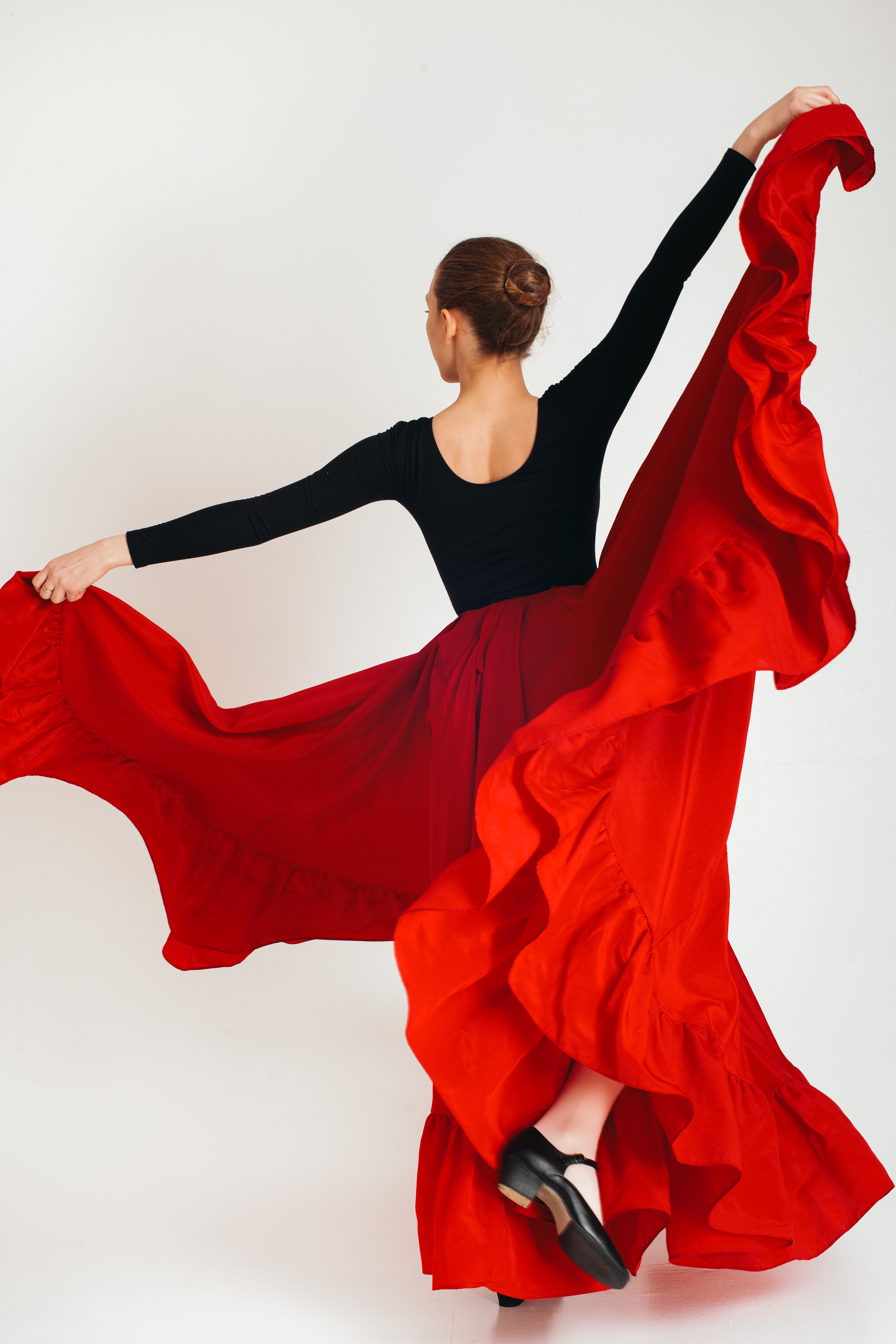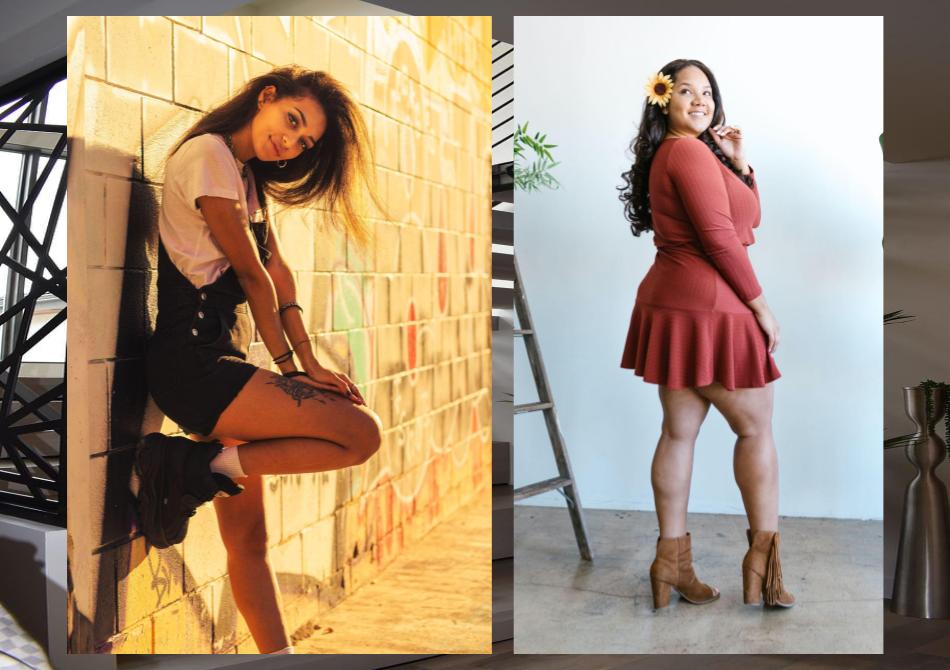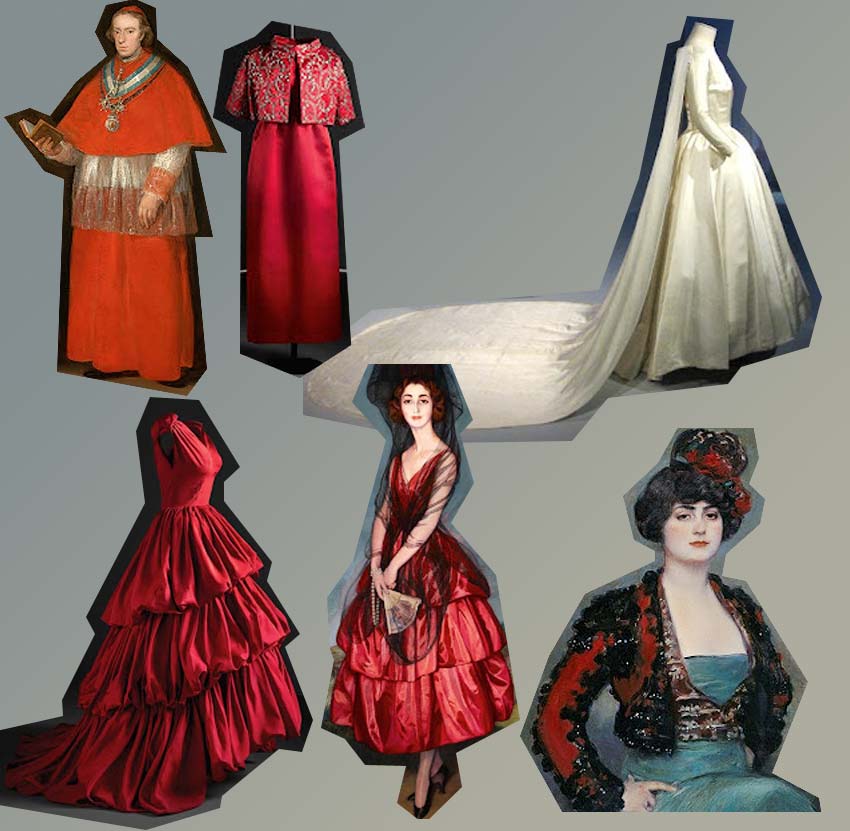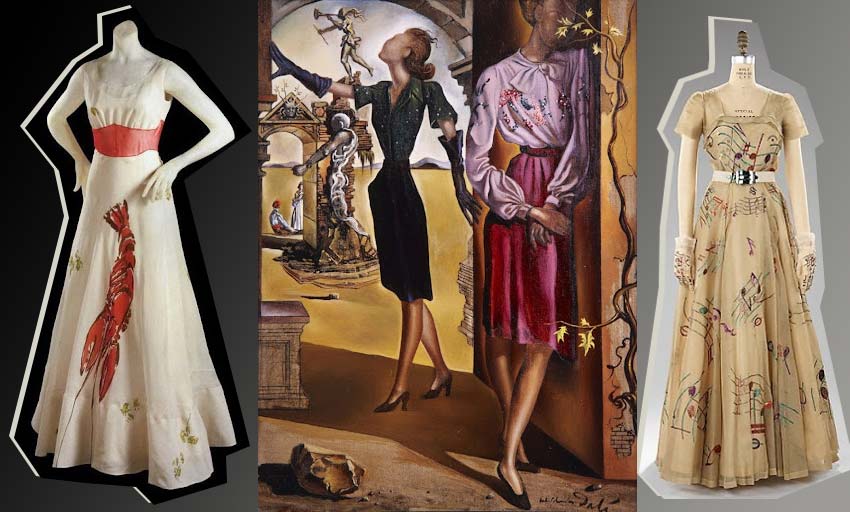Join us on a journey through the world of Spanish fashion, where we discuss every major style from 1500s to 2020s, from historic flamenco to modern flared!
When we think of Spain and art, the first thing that comes to our mind is probably flamenco dancers or architecture like the famous Sagrada Familia by Gaudi. Spain has also been considered unique with its great collaboration between fashion and art for the last 500 years. Rich textiles, exquisite laces, luscious leathers, and delicate embroidery, all raise the bar of Spanish fashion. Today, designers from all over the world continue to look to Spain for inspiration.
Spain and Style: Politico-Geographical Influences
Since the 1500s, the culture and customs of this diverse country have influenced Spanish fashion. In turn, it has influenced the world by selling their cultural products and clothing on a large scale to its occupied or former colonies.
Creating a timeline of fashion trends and styles in Spain through the centuries is easier said than done. It is because of the country’s internal make-up. The multicultural society that formed and personifies the early Spanish empire, and the constant shifts in Spain’s political and economic relationship with the rest of the world.
Spain has always been a country of contrasts. After being partially occupied by the Moors for over 700 years, it saw the coexistence of various faiths like Jewish, Muslim, and Christian until 1492. It is when it became the consistent champion of Catholicism which heralded the Spanish empire’s golden age.
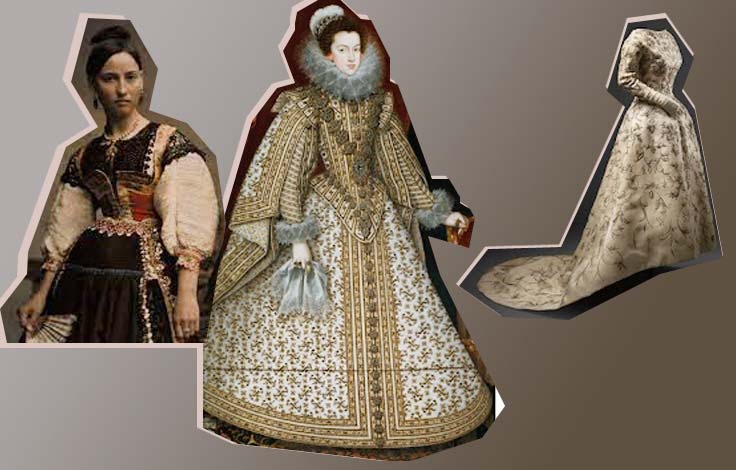
Spain embraces a range of regional identities owing to climate, geography, and language differences. The climate in Spain has suited itself to the growth of a diverse range of raw materials for textile production and craft skills. Wool from the plains of Castile, flax grew abundantly in Galicia and the introduction of sericulture and silk weaving in Valencia and Andalusia.
The Spanish colonies first produced exotic dyes, which delivered bright reds and the deepest blacks, colors that still define the Spanish palette in religious, regional, and fashionable apparel, beginning in the sixteenth century.
During the nineteenth century, Spain became more automated, yet skills like embroidery and leatherwork have remained valuable handicrafts to this day.
Spanish Fashion: Common Traditional Pieces
Spanish fashion has been modernized, but traditional Spanish clothing is still worn for special or religious events. Some of the common traditional Spanish styles worn today that have survived the changing times and climate differ by regions and cultural customs. But the most common pieces that can be frequently seen during cultural parades, festivals, and events are worn by the matadors and flamenco dancers.
Traje de Flamenca
Traje de Flamenca (flamenco dresses), worn by female flamenco dancers are long dresses with a defined neckline that hug the waist and then open at the hip and up to the ankles with the skirt and sleeves embellished with ruffles.
Flamenco dancers still dress traditionally in red, black, or white, with their hair in a bun and a rose behind their ear as an accessory.
Traje de Luces
Traje de Luces is the ornate clothes worn by traditional Spanish bullfighters have remained constant over the years. It translates to suits of lights, referring to the costume’s heavy and detailed embellishment.
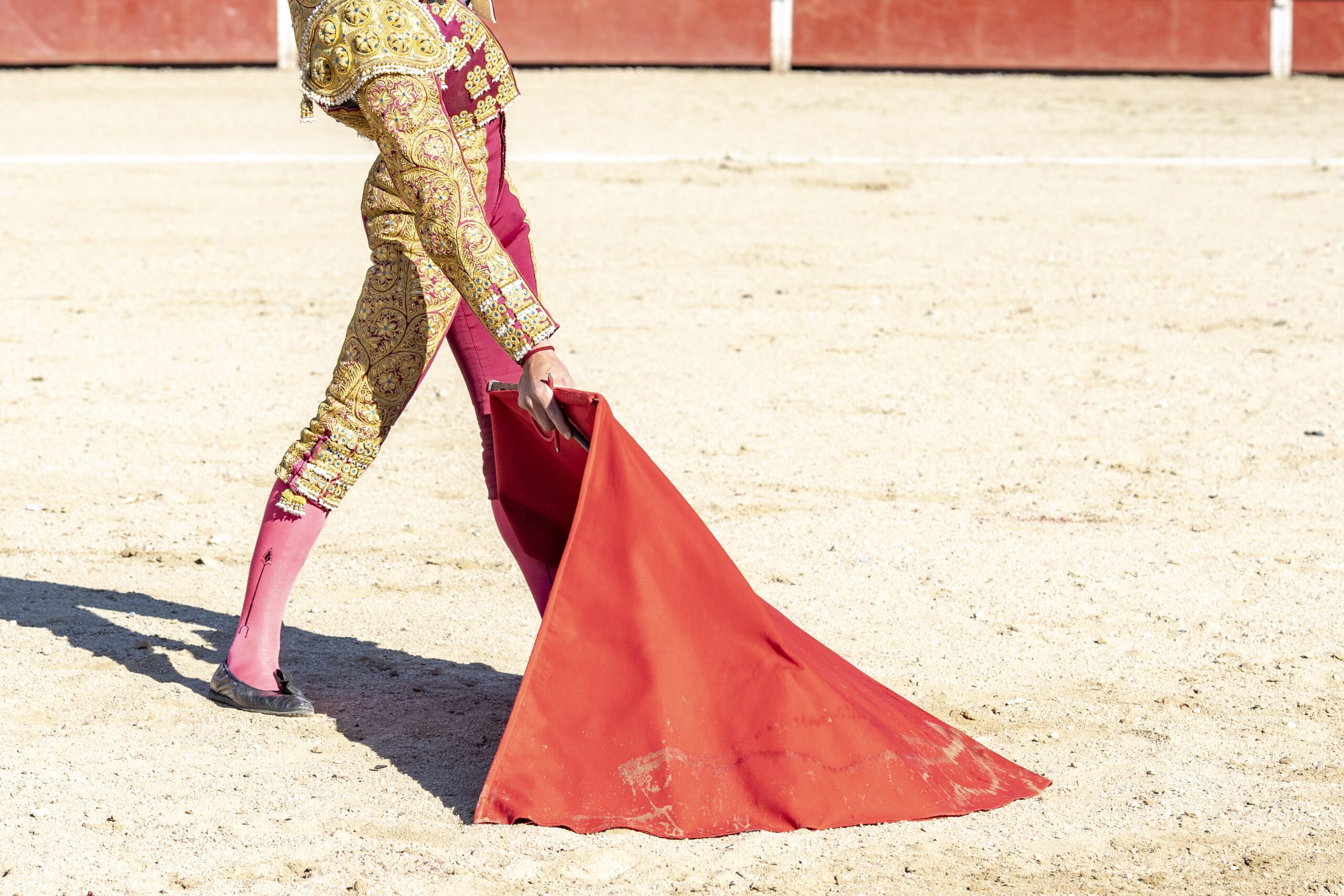
The pants and jacket of the costume are usually the same color and adorned with intricate gold, silver, or black embroidery, sequins, and Austrian knots.
Mantilla
Mantilla is a traditional Spanish veil piece worn during religious festivities such as weddings, holy week, or even during bullfights in Spain. The veil can be either lace or a silk scarf on a high comb worn over the head and shoulders.
Gilet
This is a classic example of a traditional style adapted to modern. Gilet is normally a sleeveless jacket, similar to a waistcoat or vest, that’s a staple of traditional Spanish attire. Historically, they were fitted and embroidered, nowadays the jackets are designed in a contemporary style and worn for warmth.
Read on to take a trip down lane of Spanish history with me, to witness the growth and evolution of Spanish fashion from middle age to the 21st century.
The Middle Age: All About Extravagance (10th Century – 15th Century)
The 10th to 13th century Spain was all about mantles, surcoats, and tunics in silk brocades with heavy Arab influence due to the materials being sourced from the Muslim-dominated regions. The 14th century saw the elite and aristocrats supplementing their wardrobes from abroad to keep up with the changing styles.
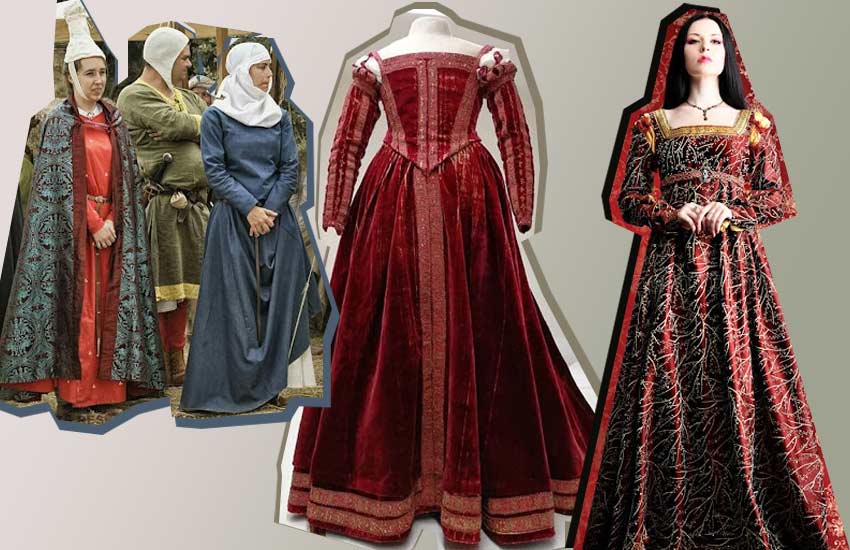
The era of Charles presented the austere black and white garments symbolizing religious influence. Extravagant gold chains, buttons, and jewelry crafted from precious metals adorned this formal dress.
The Golden Age: Fashion Forward (16th Century – 17th Century)
The time between 1556 – 1680 is heralded what is known as Spain’s golden age. This era is marked by Spain being at its most powerful. Arts and fashion flourished throughout the Spanish empire and its European neighbors.
The publication of the first known Spanish book and manual on tailoring in 1580 indicated a change in perspective in styling and fashion. In the latter half of the 16th and the beginning of the 17th-century, Spanish elite wore silk clothing that was vividly colored and embroidered, brocaded, or adorned in silver or gold.
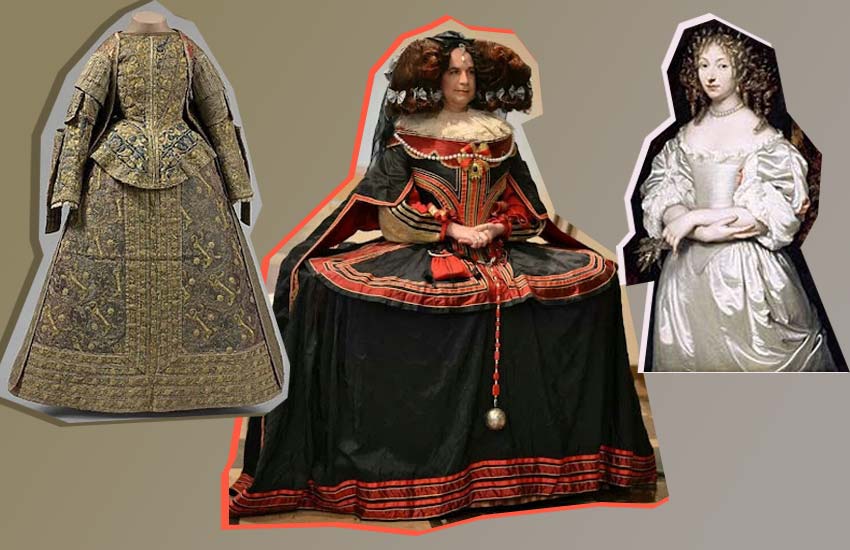
But, Spanish noblemen also isolated themselves from their European peers in terms of style by ditching doublets, jerkins, trunk hoses, and cloaks in favor of singular padded breeches. While the women preferred heavily patterned ball gowns worn over the Spanish farthingale.
The Catholic Effect (17th Century – Mid-19th Century)
After Catholicism became the prevalent religion in Spain, fashion and styles adapted accordingly. Black became the favored color for both men and women, and still stays a staple hue of Spanish fashion, it was the color of formal court dress. But it carried religious connotations, as the clergy and the grieving used to, and still wear it.
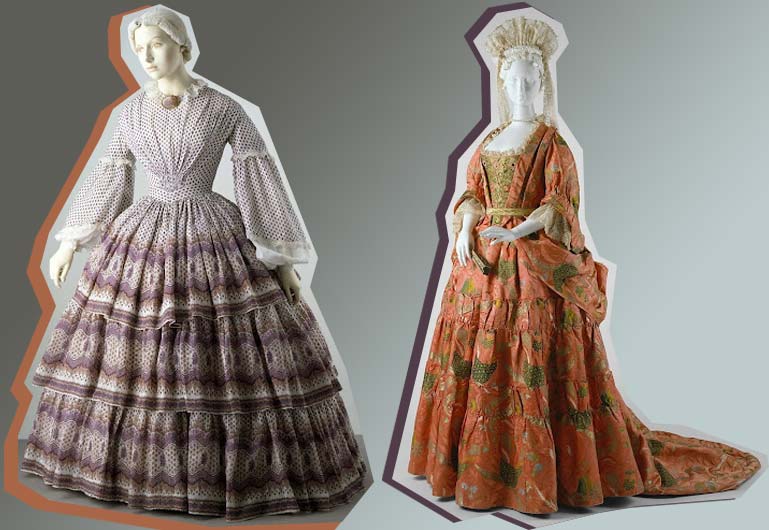
Some examples of religious influence in Spanish fashion are females wearing veils to cover their head and shoulders or high collars with ruffs as a sign of modesty. By the 18th & 19th-century, women accessorized by wearing rosaries on their hands visible to everybody. They also wore black basquiña over their gowns while going to church.
The Wardrobe From Paris (19th Century – 20th Century)
By the mid-twentieth century, wealthy Spanish citizens patronized Parisian fashion and flocked to Paris to enrich their wardrobes.
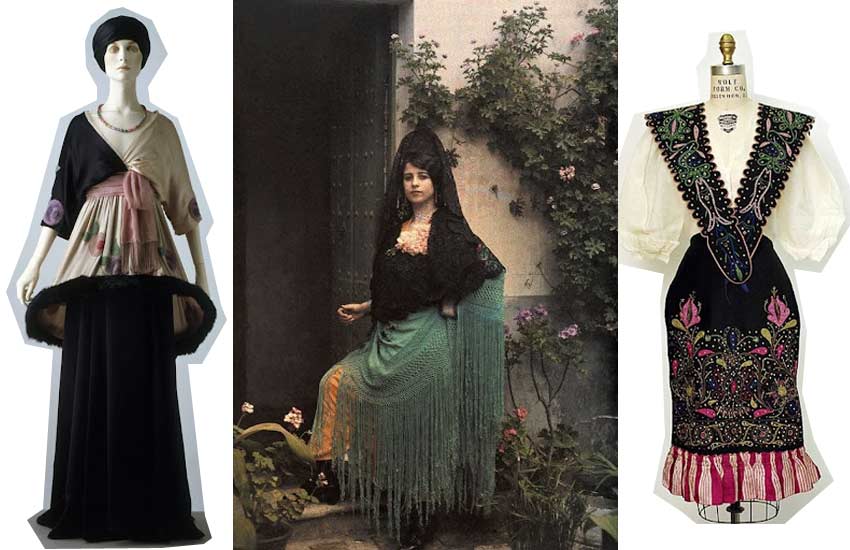
In turn, the most prominent Spanish dressmakers traveled to Paris to attend haute couture exhibitions, where they acquired models for themselves or to modify the styles and designs for their middle-class Spanish clientele.
The Modern Age: When Art and Fashion Unite (21st Century – Present Day)
The appearance of two great fashion icons in the 1900s heralded the beginning of a new era in Spanish fashion. Cristobal Balenciaga and Coco Chanel were a breath of fresh air for the Spanish fashion industry. These two legends revamped the fashion scene, pushed the boundaries of creativity and imagination, and introduced the grandeur of Spanish style worldwide.
Chanel and Balenciaga seamlessly weaved Spanish art with fashion by either collaborating with painters like Dali and Picasso or creating fashion inspired by works of the old Spanish masters.
Art Imagery Through Fashion: Cristobal Balenciaga
Considered as one of the greatest fashion designers in history, Balenciaga’s signature chic classical style was inspired by Spanish baroque painters. He studied the works of Francisco de Zurbarán, and Francisco de Goya to reinvent Spanish fashion and create his primary collection in 1936.
His line of Spanish-inspired ensembles was bursting with romantic jewel-toned shades and opulent dresses. It was an ode to the classic Spanish rich textiles and traditional embroidery worn by the aristocracy of the golden age.
A Rebel and Pioneer: Coco Chanel
Gabrielle “Coco” Chanel was one of the 20th century’s most influential fashion designers and she revolutionized women’s fashion. Her style symbolized freedom and elegance that emancipated ladies from corsets and lace in favor of more modern shirts and pants.
Coco Chanel collaborated with painters such as Pablo Picasso and became a trailblazer in pioneering the perfect modern expression of fashion through art and vice versa. Chanel’s original and modern styles were as revolutionary as Picasso’s cubism and the duo created a wonderful and historical amalgamation of art and fashion. Chanel also worked with Salvador Dali, the father of surrealism.
A Special Mention to the Master: Salvador Dali
We can truly witness the influence and reflection of Spanish painter Salvador Dali’s surrealistic style in designer Elsa Schiaparelli’s works.
The Schiaparelli-Dali collaboration gave birth to marvels such as the “shoe hat”, inspired by the painter’s photograph of his wife balancing shoes on her head, the whimsical “tear’s dress” and the unforgettable “lobster dress,” inspired by Dali’s “dream of New York – man finds lobster in place of the phone”.
The Way to High-Street
The grandeur of Spanish fashion is now known all over the world. And, instead of just classic couturiers or designers, Spain has also produced a number of brands offering high-street fashion. Some of the most well-known high-street Spanish brands are Zara, Mango, Manolo Blahnik, Loewe’s, Massimo Dutti, and Adolfo Dominguez. Their collection includes shirts, tops, jeans, and party wear. Blahnik is synonymous with the revival of the coveted stiletto heels.
These high-street brands have become household names and cater to a plethora of clients that range from teenagers to middle-aged professionals globally.
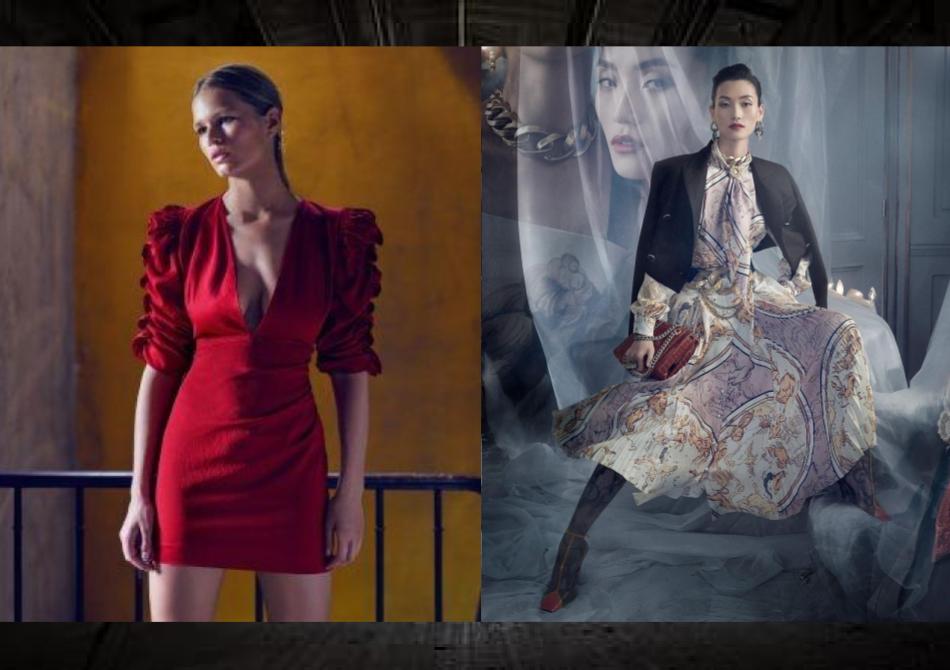
Fashion is an ever-changing entity and Spanish fashion has come a long way since the fifteen hundreds, from ball gowns and breeches to summer dresses and jeans from traditional to modern.
Spanish fast-fashion brands such as Zara and Mango have conquered the international market with outstanding success. Along with these, designer Spanish brands like Paco Rabanne, Carolina Herrera, Manolo Blahnik, and Miguel Adrover have all left their imprint on the international fashion landscape.
Through creativity, innovation, and competitiveness, be it haute couture from Balenciaga or casual wear from Zara, Spanish fashion is renowned and desired. Furthermore, with designers such as Ralph Laurens’ use of ruffles and matador hats, D&G’s fringed dress, and Oscar de la Renta’s flounced skirts and flamenco heeled shoes, traditional Spanish culture continues to affect the fashion industry even today, where art and fashion merge as an expression of innovation that continues attracting attention, accolades, and praise globally.
Read next: Japanese Fashion: A Journey from Ancient to Modern

Prerna Sharma writes about the latest fashion, beauty and dressing. She is currently pursuing a master’s degree in Film, T.V. and Radio and did her Bachelors in English Honors. She also has a PG Diploma in Media and Public Relations from St. Xavier’s College.
Prior to working as a Fashion Journalism Intern at ShilpaAhuja.com, she started her career as a Travel Writer and Digital Marketer, where she wrote for different spheres like medical services, film review, information technology, and real estate. This experience fostered her awareness around travel and tourism, and creative writing, but her keen eye for trends made her transition into fashion writing.
Originally from Kolkata, Prerna loves staying up to date in current fashion and culture trends, be it movies, music, or social media. When she isn’t staring at a screen, you can find her spending way too much time writing poetry or trying out new outfits.
She can be found @i.am.prerna on Instagram.
